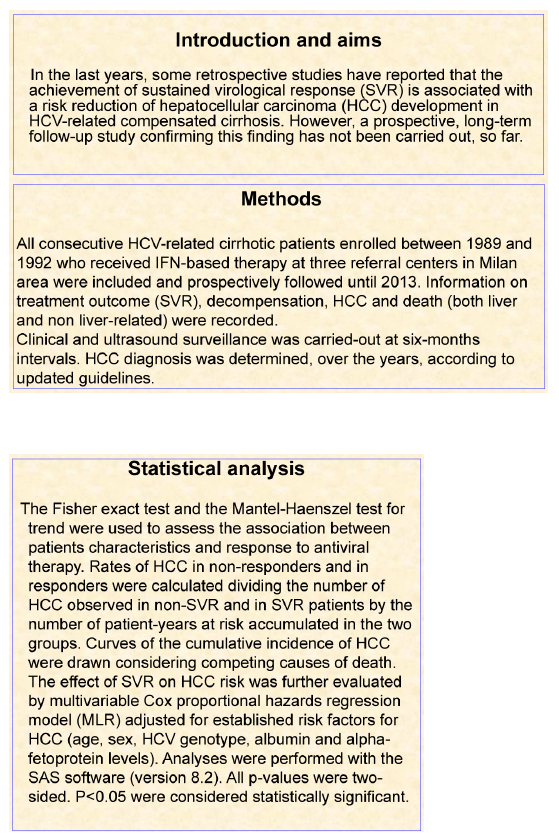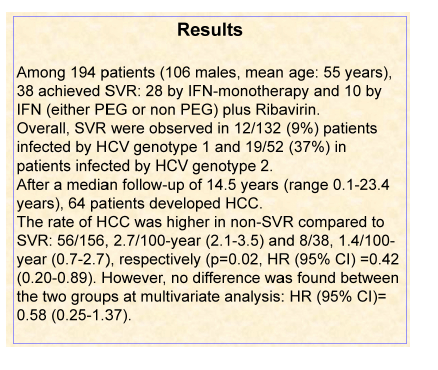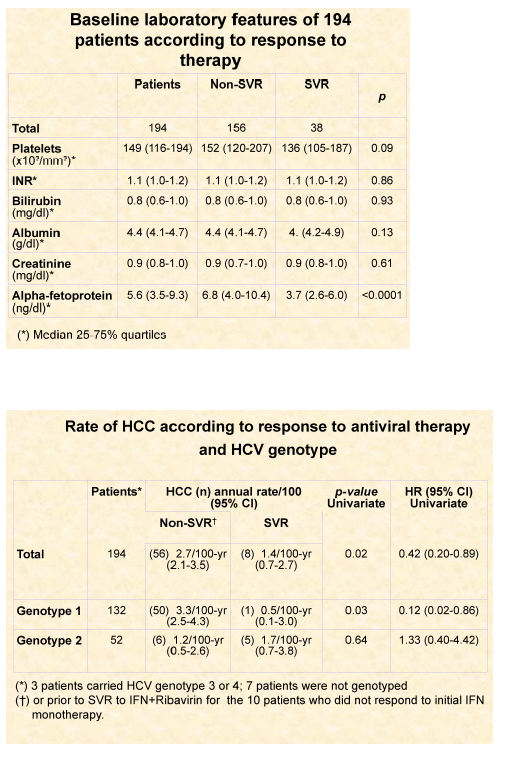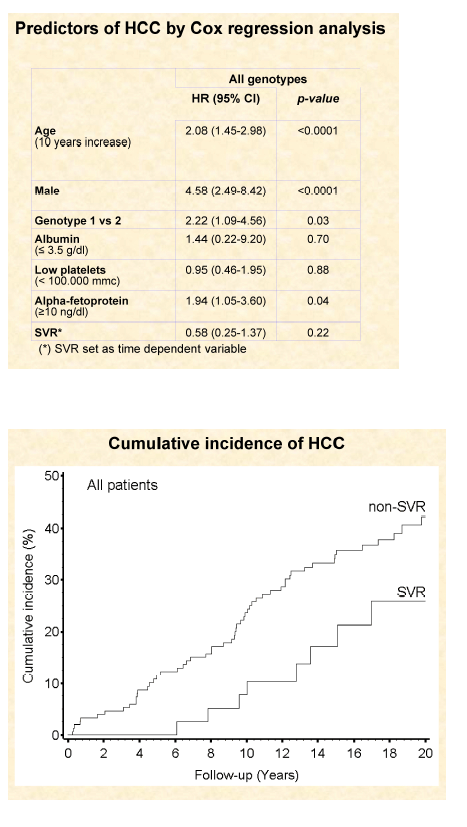 |
 |
 |
| |
SVR IS ASSOCIATED WITH NO RISK REDUCTION OF HCC DEVELOPMENT IN PATIENTS WITH HCV-RELATED CIRRHOSIS. A PROSPECTIVE, UP-TO 23 YEARS, COHORT FOLLOW-UP STUDY
|
| |
| |
Reported by Jules Levin
EASL 2014 April 9-13 London, UK
S. Bruno1, A. Crosignani2, L. Roffi3, S. De Lisi1, S. Rossi1, V. Boccaccio1, P. Zermiani2, M. Mondelli4, P. Maisonneuve5
1Internal Medicine, AO Fatebenefratelli e Oftalmico, 2Internal Medicine, AO S. Paolo, University of Milan, 3Internal Medicine, AO Bassini, Milano, 4Research Laboratories, Department of Infectious Diseases, Fondazione IRCCS Policlinico San Matteo and University of Pavia, Pavia, 5Division of Epidemiology and Biostatistics, European Institute of Oncology, Milano, Italy
from Jules: They didn't present a power calculation to tell us whether they had any chance of finding a difference given how few patients with SVR they followed (only 38!). Their study size was too small to detect this difference. They had too many small SVR sub-groups to detect a difference: child-class, genotype 1 n=12, Gt2=19. The rates of HCC show a benefit for SVR.
Program abstract
Background and aims: Retrospective studies showed that the achievement of sustained virological response (SVR), in the short-term, reduces/delays but not abolishes the risk of hepatocellular carcinoma (HCC) in HCV-related compensated cirrhosis. Whether this is true, in the long-term, is still unknown.
Methods: All consecutive HCV-related cirrhotic patients enrolled between 1989 and 1992 who received IFN-based therapy at three referral centers in Milan were included. Clinical and ultrasound surveillance was carried-out at six-months interval. HCC diagnosis was determined, over the years, according to updated guidelines. Rates of HCC in non-SVR and in SVR patients were calculated dividing the number of HCC by the number of patient-years at risk collected in the two groups. Curves of the cumulative incidence of HCC were drawn considering competing causes of liver-related decompensation and death. Univariate and multivariate Cox regression analysis, adjusted for well-known risk factors for HCC, was carried to assess the effect of SVR on HCC risk.
Results: Among 194 patients (106 males, mean age: 55 years), 38 achieved SVR: 12/132 (9%) infected by HCV genotype 1 and 19/52 (37%) by HCV genotype 2.
After a median follow-up of 14.5 years (range 0.1-23.4 years), 64 patients developed HCC. The rate of HCC was higher in non-SVR compared to SVR: 2.7/100-year and 1.4/100-year, respectively (p=0.02). However, no difference was found between the two groups at multivariate analysis.

Conclusions: In HCV-infected patients, SVR was associated with no risk reduction of HCC development if cirrhosis has already occurred. Therefore, to prevent HCC, now available effective treatments should be recommended at early disease stage.







|
| |
|
 |
 |
|
|